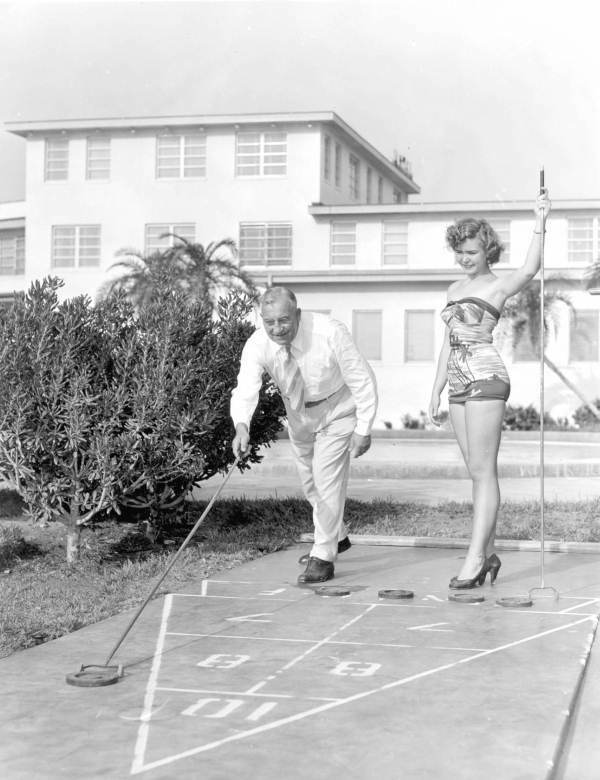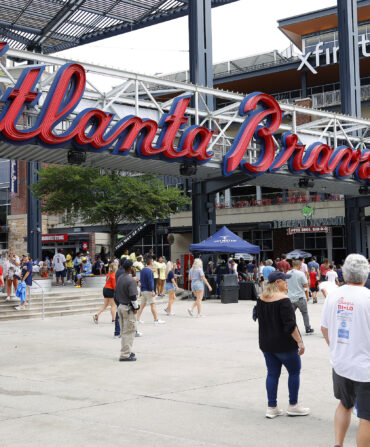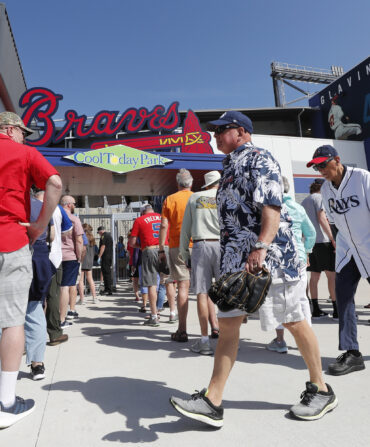Long associated with cruise ships, retirement communities, and octogenarians wearing tracksuits, shuffleboard is spreading north and west from its Florida stronghold thanks to an unlikely demographic: millennials.

“The common conception is that it’s an old person’s sport, but I don’t think that’s necessarily true,” says thirty-six-year-old enthusiast Dustin Arnold, who pays $50 annually to play in the St. Petersburg Shuffleboard Club. “It has this country club–type feel, but it’s super accessible. Have a couple of drinks and play. It’s not very physically taxing, either.”
Given its modern appeal—perhaps because it’s easy, affordable, and pairs well with alcohol—it’s not surprising the game was born of carousing. Shuffleboard’s roots trace back centuries as a British tavern game that involved shoving coins down a wooden plank. The British Navy brought the pastime on board ships to keep sailors entertained, and it jumped to cruise ships in the mid-1800s, explains Christine Page, executive director of the St. Petersburg Shuffleboard Club, which is celebrating one hundred years in 2024.

The game came ashore in Florida in 1913 after hotelier Robert Ball fell in love with it on a transatlantic voyage. He painted a court outside of his Daytona Beach hotel and shuffleboard took off, with clubs like St. Pete’s popping up all over the state. A selling point was its simplicity, says Page, whose club standardized the rules of play in 1928.
Using a stick (cue) you push a flat, round disc (biscuit) down a long, narrow, rectangular court, aiming for the triangular scoring section at the end. After you shoot, your opponent has a turn and can even strategize to knock your disc out of the scoring area.
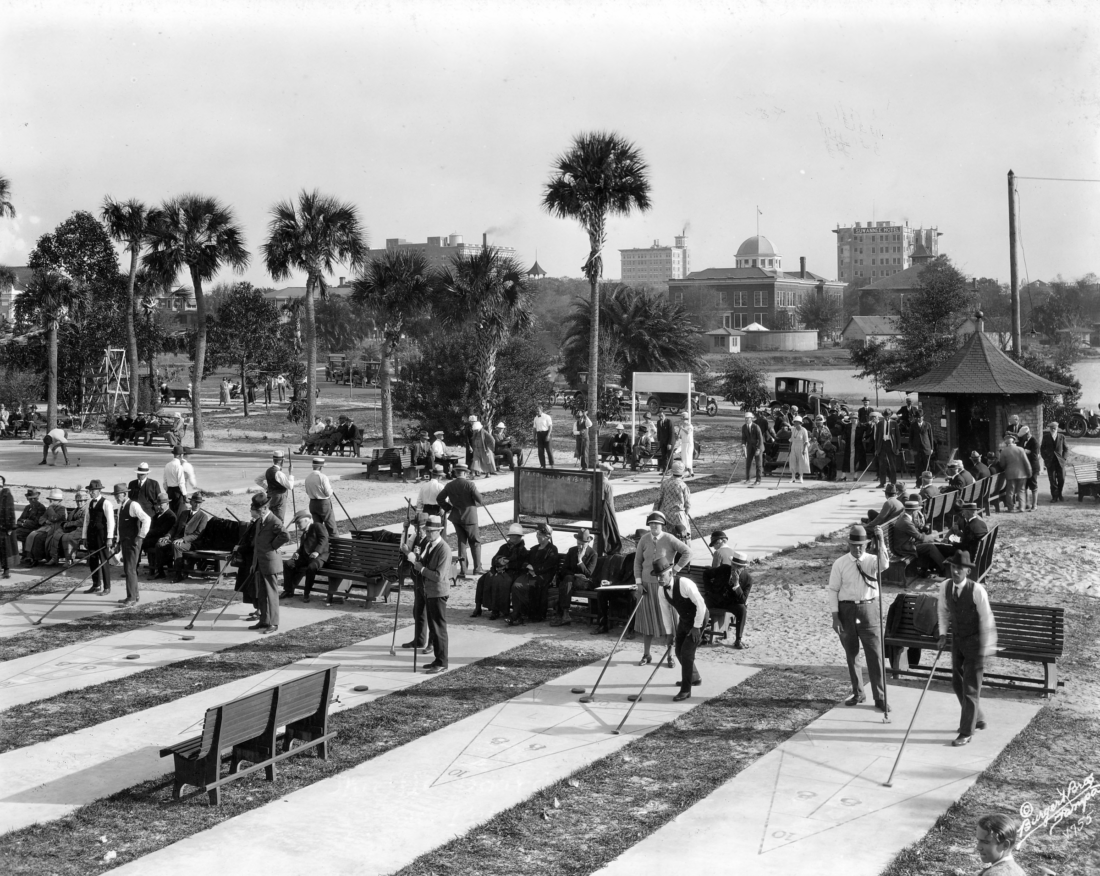
“You don’t have to be an athlete,” says Page, fifty-three, who began playing in her thirties. “Men can play with women, older people can play with younger people. It’s like a great equalizer.”
After a meteoric rise in popularity that lasted through the 1950s, the game became a victim of its own success. Every new development, from mobile home parks to retirement communities, included shuffleboard courts, so people just stayed home to play rather than going to a club. As those original players aged, shuffleboard got an old-person reputation, like bridge, bingo, and badminton.
Shuffleboard nosed out of retirement in 2005, when a group of young artists asked management if they could open up the St. Pete club to the public on Friday nights to play for free and listen to live music. The initiative drew in younger players and got the community excited about the game. They embraced something “uniquely St. Pete” that reflected the city’s history and heritage, Page says. Since then the club has grown from a low of thirty-five members to over 2,600 members, more than 60 percent of whom are Gen X, millennial, and Gen Z players.

The game’s moment in the sun isn’t confined to St. Pete, Clearwater, or Tampa, which all boast robust clubs. The popular Royal Palms Shuffleboard Club opened in Brooklyn in 2014, followed by a Chicago location in 2018. Atlanta and Virginia Beach have shuffleboard venues, too. And Texas-based Larks Entertainment is planning to mainstream the game when it opens shuffleboard-themed restaurants in Fairfax, Texas, and Kansas City, Missouri this spring, followed by franchises in Nashville, San Diego, San Antonio, and the mothership, St. Petersburg.
Larks Entertainment co-founder and CEO Curt Skallerup is betting on shuffleboard for the same reasons younger generations are embracing it: It’s a fun, economical activity that can be played by anyone.
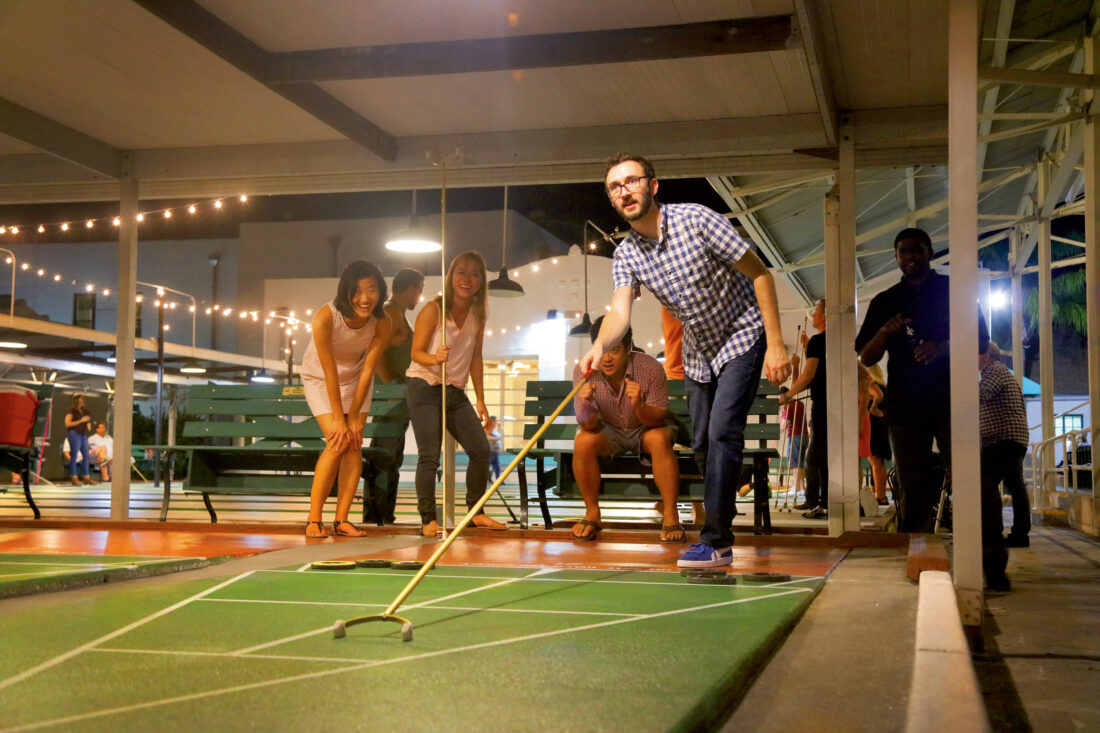
“You can play shuffleboard in a wheelchair, you can play it drunk,” Skallerup says. “It crosses a lot of boundaries.”
Whether it crosses the boundary from occasional diversion to downright craze remains to be seen. “I don’t know if it’s ever going to explode,” concedes Arnold. “But like pickleball, with more people playing sports that used to be considered old people’s sports, then why not?”


